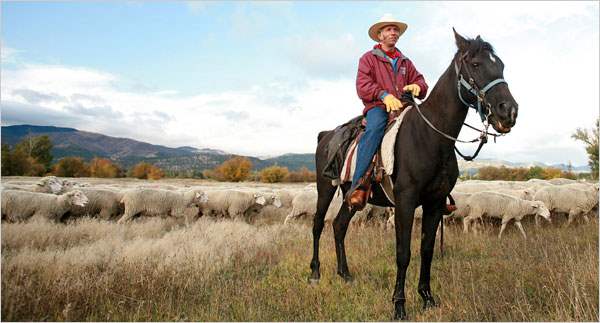Got Weeds? These Sheep Will Make House Calls
The New York Times
October 27, 2008
By PAMELA J. PODGER
MISSOULA, Mont. — Chilled by an autumn wind, Enrique Marquez watched from horseback as the sheep gamboled down the mountain. A border collie nipped the heels of wayward ewes.
All summer and into the fall, the flock grazed on noxious weeds infesting about 1,000 acres of public lands above the Missoula Valley as part of this city’s effort to restore its native prairie grasses.
Nationwide, sheep grazing is gaining popularity as a low-cost, nontoxic tool in the battle to control leafy spurge, knapweed, dalmatian toadflax and other invasive weed species. The approach is catching on in places like Nantucket, Civil War battlefields in Virginia, ski slopes in Vermont and vineyards in California.
Tom McDonnell, a staff consultant with the American Sheep Industry Institute, called this kind of grazing a “growth industry.” Mr. McDonnell cited a study by the College of Agriculture and Life Sciences at Cornell University that indicated nonnative weeds had invaded 40 percent to 50 percent of America’s croplands, pasture and public lands and were spreading at a rate of 1.75 million acres per year.
Sheep grazing is a long-term solution best used in conjunction with other methods, like beneficial insects, controlled burns, herbicides and hand pulling, officials said.
Jeff Mosley, an extension range management specialist at Montana State University, said sheep were a natural “low fossil fuel” way of controlling invasive plants, with the added benefit of providing meat and wool.
“It’s environmentally friendly,” Mr. Mosley said. “Grazing has an aesthetic appeal and a bucolic aspect. It’s a natural form, and people appreciate that as well.”
In the mountains ringing the Missoula Valley, about 600 acres of city lands are 75 percent to 100 percent invaded by noxious weeds, said Missoula’s conservation lands manager, Morgan Valliant.
“We’re using the sheep to slowly turn back the clock and decrease the density of the weeds and get some seeds” of native grasses and wildflowers sown, Mr. Valliant said, adding, “Each year, we’re learning more and more.”
Still, some local residents are skeptical.
Giles Thelen, a plant ecologist at the University of Montana in Missoula, said that results of the sheep grazing program were anecdotal and that plots should be used to measure how effective the sheep were. Mr. Thelen also worries about the sheep worsening the problem by picking up invasive seeds in their wool and dropping them in new areas, as well as causing erosion with their hooves.
“There’s no data to show if the sheep are making the situation worse or better,” he said. Some herbicides may be more effective, he said, “but people don’t like poison on their public lands.”
Freelance Writing, Editing & Storytelling
Compelling and accurate narrative
Writing. Done. Right.
